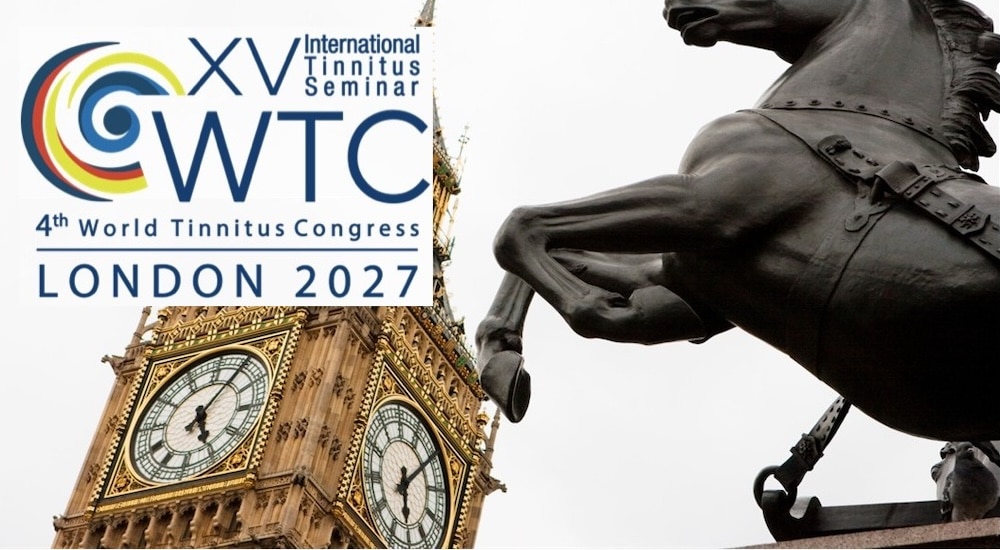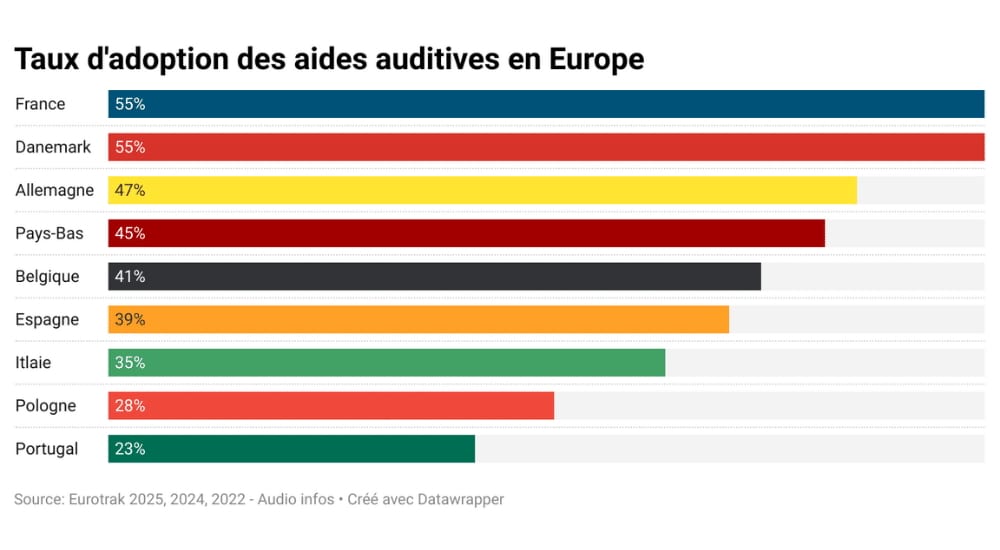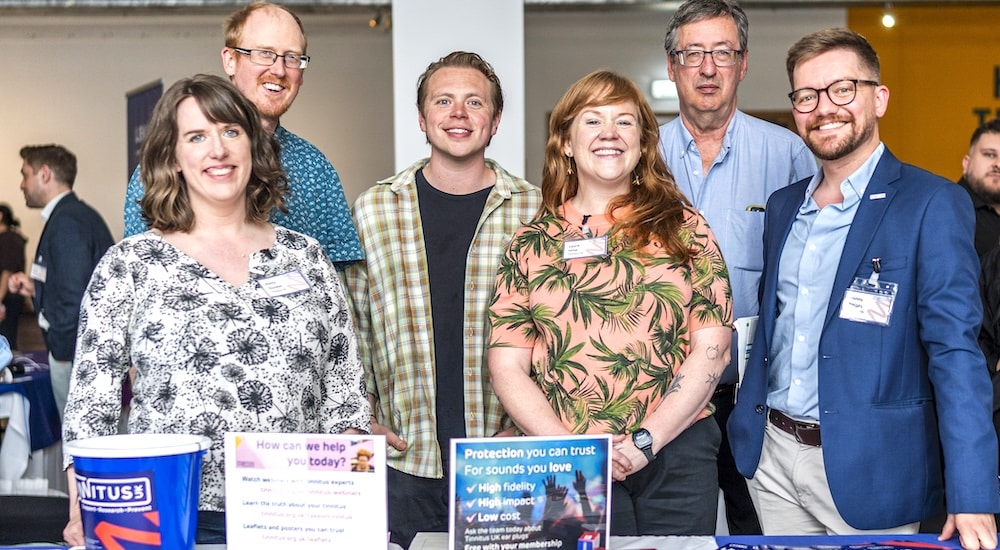Is gene therapy for hearing loss on the cusp of a new era?
Autumn 2023 brought news of breakthrough success for a Chinese medical team treating the deafness of several children using gene therapy. The accomplishment cannot be underestimated because the process, which aims to repair defective genes, could restore hearing to certain children deaf from birth, and go on to tackle other congenital deafness. Meanwhile in France, l’Institut de l’Audition is also on the threshold of achieving a similar medical advance.

The announcement from Fudan University, Shanghai made a splash. Beyond its impact in the specialist medical press, even mainstream media has praised Chinese prowess that meant four children who were born deaf were able to regain normal hearing in a few weeks thanks to gene therapy. A world first!
Chinese scientists injected a healthy copy of the otoferlin (OTOF) gene into the inner ear of these patients to replace the mutated form responsible for certain cases of congenital deafness. Patients affected by this genetic singularity develop profound deafness because of mutations in the OTOF gene coding protein, which is essential for the transmission of sound information at auditory sensory cell synapses.
A parallel announcement from the USA
At the same time, the American biotech Regeneron Pharmaceuticals, which last autumn completed its acquistion of Decibel Therapeutics, a biotech specialising in hearing treatment, also announced that it had treated a child under two-years-old who had suffered from a mutation in the OTOF gene.
An additional clinical trial is also under way with another team of researchers in the United States, and France is expected to make a similar announcement soon.
Across the Channel, the news from China did not surprise Dr. Saaid Safieddine, research director at the French National Centre for Scientific Research (CNRS) and head of the Technologies and Gene Therapy team for deafness at l’Institut de l’Audition (Hearing Institute), which is responsible for one essential pillar of the project.
“My team developed the therapeutic vector and established and published proof of concept in 2019. It is on this major advance that the Chinese team based their clinical trial on the children. For we researchers, it is normal to make our discoveries public: in research, sharing knowledge is essential; this contributes to collective emulation. Our main goal is to advance therapies for the benefit of patients,” said Dr. Safieddine, who underlines that the announcement from China confirmed the quality of the work of the French teams, on which the Chinese team relied heavily. He also claimed that the Chinese team was able to get ahead because clinical research in China is not subject to the same rules as in Europe or the United States. “The rules and regulations surrounding clinical trials can vary from one country to another, with notable differences between France, which follows strict European regulations, and China, which has its own constraints and controls with a certain flexibility in its legislation, as well as ease in the construction of patient cohorts.”
France among the pack leaders
France, therefore, is not “lagging behind”.”We are in the same leading pack, and we will very soon come out with a therapeutic vector whose data reliability is robust and guaranteed in humans,” adds Dr. Saaid Safieddine.
His view is that the human therapeutic gene is ready and the clinical trial is now in the hands of the French biotech firm Sensorion, a high-level partner of l’Institut de l’Audition, and the ENTs of the project, in particular those of the pediatric ENT department of the Parisian teaching centre, the Necker–Enfants Malades Hospital.
Otoferlin deficiency, almost a”simple“pathology to treat
“All clinical trials, be they in China or America, focus on the same pathology, otoferlin deficiency. It is in fact a ‘simple’ pathology, affecting children deaf from birth, with bilateral deafness, and without degeneration. This ‘correction’ can act quickly, because the physiological and anatomical development of the ear is not affected by the otoferlin gene mutation,” explains Nawal Ouzren, CEO and Director of the biotech company Sensorion.”Each team designates its own vector, the products are different, but the approach is similar,”she continues. Nevertheless, the clinical trial cannot be carried out with the usual phases.
“Our work with the clinical trial aims to evaluate the safety, tolerance, and effectiveness of the treatment in humans. We have submitted a phase 1/ phase 2 application, meaning that we will not need to go through the study on healthy volunteers and will be able to treat patients directly. Indeed, gene therapy is too heavy a treatment to inject into people without disabilities,”continues the Sensorion CEO, who is delighted with these new advances:” Hearing is of interest to more and more people, while it was a somewhat neglected sector a few years ago. We sense the interest of scientists, but also the growing interest of people in industry.”
Sensorion is at work on multiple projects
In addition, Sensorion is working on a programme the biotech calls GJB2-GT, though this is still in the context of gene therapy. It aims to repair the GJB2 gene mutations that are the leading cause of deafness in children.
At the same time, a small molecule is being developed in two phase 2 clinical studies: the SENS-401. The first study focuses on the effectiveness of SENS-401 in preventing ototoxicity induced by cisplatin, a potent chemo drug in cancer therapy. This drug is in use against various cancers, but it causes hearing loss in many patients. SENS-401 has already shown, according to Sensorion’s preclinical studies, a potential for preserving hearing in patients receiving this molecule, and without impacting the effectiveness of chemotherapy treatment. Preliminary results were announced in December 2023 and the study will be presented in September 2024 at the World Congress of Audiology in Paris.
SENS-401 is also the subject of a second clinical study, one that evaluates its potential for preserving residual hearing in patients receiving a cochlear implant. The company anticipates the end of patient enrolment at the beginning of 2024, and the publication of data on the primary endpoint of the study by the end of the first half of 2024.
Gene therapy for deafness is taking some very big steps indeed!
How does gene therapy work in practice?
In gene therapy, the terms “vector” and “injection” are often used interchangeably. The technique involves injecting a harmless virus (an adeno-associated virus or AAV), which constitutes the vector carrying the functional gene intended to repair the patient’s defective gene.
In the case of deafness, the technique involves injecting this vector into the fluid of the inner ear. In current clinical trials, this is a functional gene capable of producing otoferlin, necessary for the proper functioning of the inner hair cells responsible for hearing.
The liquid is injected directly into the cochlea. It is, therefore, a delicate operation which must respect the fine structures of the inner ear.
However, this type of operation is already used in ear surgery, for example for cochlear implants. In this way, gene therapy can benefit from cochlear implant surgery practices, notably the use of robot-surgeons, to make the operation safer.
Source: Audio Infos France issue 279 January 2024







